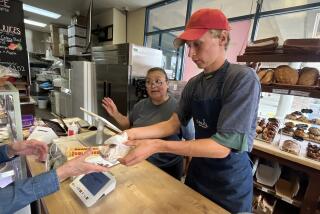L.A. pushed to review quake-vulnerable apartment buildings
Seismic experts and engineers have long warned that a certain type of wood-framed building is particularly vulnerable to collapse during a major earthquake, because the first story cannot support the weight of the upper stories.
During Southern California’s last destructive temblor in 1994, about 200 of these buildings were seriously damaged or destroyed, including the Northridge Meadows apartment complex, where 16 people died.
Nearly two decades after the Northridge quake, a Los Angeles councilman is calling on the city to consider an inventory of thousands of these so-called soft-story buildings — many of them apartments — that dot the region. This first-of-its-kind list would apply to buildings in Los Angeles built before 1978 with at least two stories and at least five units.
Councilman Tom LaBonge’s proposal marks the first significant seismic safety effort in Los Angeles in years. It comes four months after San Francisco passed a landmark law forcing owners to strengthen about 3,000 soft-story apartment buildings. City officials there estimated the retrofits — which involve strengthening the bottom floor — will cost $60,000 to $130,000 per building.
After the Northridge quake, L.A. city building officials talked about identifying other soft-story buildings and requiring owners to retrofit them. But the proposal died.
LaBonge described his plan as a first step in assessing the seismic safety issues and figuring out how many such buildings there are.
“I had it investigated internally in my office and said, ‘OK, let’s look at this,’” he said. “And the truth of the matter is, we should be very cognizant that there will be another earthquake. Because this is earthquake country.”
Among the most common soft-story buildings are apartments and condos with ground-floor parking under residential units. In these structures, the bottom level is supported by skinny, fragile columns that can be crushed or shoved aside during shaking of the heavier upper floors.
At the Northridge Meadows apartment complex, the top stories pancaked onto the first story, which contained both apartments and parking. All 16 people who died were on the first floor.
Adding a strong structural frame to the bottom floor and installing sturdy walls can keep the ground floor upright during a quake.
Soft-story residential buildings are considered one of the three most vulnerable building types in a major earthquake, said Lucy Jones, seismologist for the U.S. Geological Survey. The others are made of bricks or concrete.
“Getting rid of softer stories will save a lot of lives,” said Jones.
The engineer who suggested the inventory idea to LaBonge was David Lee, who works for a mechanical engineering firm, Taylor Devices, that makes shock absorbers to protect buildings during earthquakes. Lee said it has been difficult to get L.A. officials interested in the subject of soft-story building safety but that San Francisco’s actions offered a new opportunity to raise the issue.
In 1996 — two years after the Northridge earthquake — the City Council rejected mandatory retrofits for soft-story buildings, opting instead for a voluntary program.
San Francisco, by contrast, has taken more aggressive action. During the 1989 Loma Prieta earthquake, numerous soft-story buildings in the city’s Marina district failed, their bottom floors crushed by the floors above.
Under San Francisco’s law, property owners would be able to pass on the costs of the seismic strengthening to their tenants — even those under rent control — and would be able to recoup the costs over 20 years.
The city is working with local banks to ensure availability of loans.
In Los Angeles, efforts to require retrofitting for soft-story buildings will likely face opposition from apartment owners — at least if there’s no plan for financial help.
Jim Clarke, chief executive officer of the Apartment Assn. of Greater Los Angeles, said he doesn’t mind the creation of a list of soft-story buildings — but forcing retrofits would hurt property owners if they can’t afford to do them and are unable to pass on the costs to their tenants.
“Forty-three percent of our members are senior citizens,” Clarke said. “A big hit like that would be devastating.”
Beverly Kenworthy, executive director of the Los Angeles division of the California Apartment Assn., said the city should help property owners pay for any required fixes.
“Some of these mandatory laws can create a hardship,” she said, with many properties owned by couples who “don’t have access to a lot of capital.”
“We don’t think it’s a bad idea — there just needs to be a type of funding mechanism ... to help property owners pay for it,” she added.
LaBonge’s proposal calls on city officials to figure out how to identify potentially dangerous soft-story residential buildings across the city. Councilman Jose Huizar, who seconded LaBonge’s motion, said through a spokesman that he hopes his City Council planning committee will discuss the idea soon.
More to Read
Sign up for Essential California
The most important California stories and recommendations in your inbox every morning.
You may occasionally receive promotional content from the Los Angeles Times.













